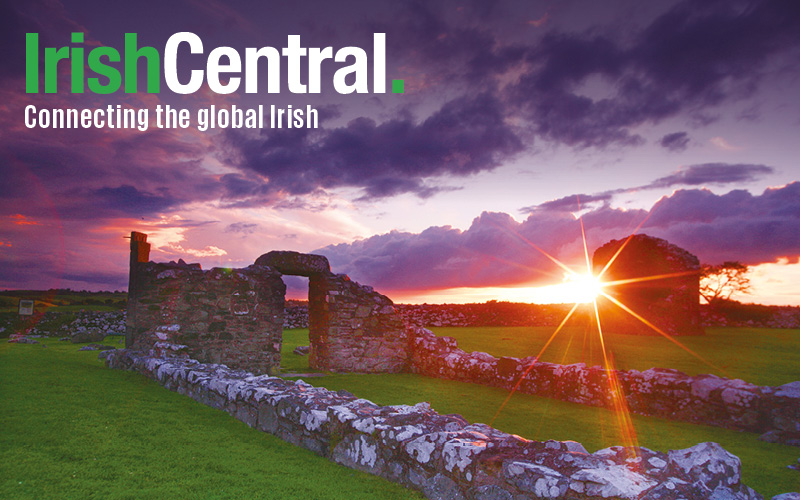At one time or another, many of us have sketched our family tree, either for a school project or for our own pleasure. But, despite the help of my grandparents, I could only trace back to my great great-grandparents’ generation.
The rest seemed lost to history or accessible only to professional genealogists. However, the Internet has opened up a whole new world to the amateur sleuth.
In the past decade, the growth of genealogy Web sites has made roots research more and more accessible.
There are still some challenges. For instance, fires during the 1916 Easter Rebellion in Ireland damaged the original records in some locales, contributing to a somewhat erratic Irish historical record.
But new developments in roots research are gradually lifting the barriers to DIY scholars, and there are several ways to accurately and successfully trace your Irish roots.
The most recent breakthrough is the digitization of the 1901 and 1911 Irish census records. The project, lead by the National Archives of Ireland and Library and Archives Canada, will see the creation of two online indexes: a topographical index based on street location/townland, and a nominal index to every individual listed in each census, featuring first name, surname, age and sex. All information will be free and fully accessible.
So far, four counties’ census records from 1911 – Antrim, Down, Dublin, Kerry – can be viewed on the Web site (http://www.census.nationalarchives.ie/).
Publication of the other Irish counties will be available in the following order by mid-2009:
- Donegal
- Cork
- Wexford
- Galway
- Offaly
- Limerick
- Mayo
- Waterford
- Armagh
- Carlow
- Cavan
- Clare
- Fermanagh
- Kildare
- Kilkenny
- Leitrim
- Derry
- Longford
- Louth
- Meath
- Monaghan
- Laois
- Roscommon
- Sligo
- Tipperary
- Tyrone
- Westmeath
- Wicklow
The National Archives site offers hope for those of us attempting to pinpoint our Irish roots – now you don’t need a genealogist in the family to trace your Irish ancestry
The Internet
For most of us, the easiest research tool is our computer. There are a multitude of Web sites that contain extensive information on Irish genealogy records and local history.
As mentioned the 1911 Irish census is now available at the National Archives of Ireland site. Access to the census allows researchers to learn their family members’ names, ages at certain points in time, their parents’ birthplaces and much more.
The National Archives site is most useful for the would-be genealogists who already have a bit of information on their family, such as the full name of a family member, the parish or townland where the family lived or the approximate date of a birth, marriage or death in the family.
The U.S.’s National Archives are a useful resource as well for those of us whose family members immigrated from Ireland to America.
At http://www.archives.gov/genealogy/, you can sift through census records, military documents, immigration and naturalization records and land ownership reports. Hard copies of these documents will cost you, however, usually about $25 each.
Other Web sites that provide information on family history include the following:
Genealogy.com searches family and local histories, the U.S. Census, Social Security Death Index, the Genealogy Library and more to locate your ancestors.
Rootsweb.com is focused on connecting people who can share genealogy information with each other, which is key when tracing your roots.
Ancestry.com helps you to create your own family tree, offering suggestions on how to fill in the gaps with “ancestral hints” from various historical sources.
Irishroots.com, run by the Irish researcher, commentator and writer Michael O’Laughlin, features podcasts, blogs and forums on Irish family heritage. Much of the site is only accessible to members, though, which requires a fee.
Irish-roots.ie, the Web site for the Irish Family History Foundation, is a fully accessible online resource. Here you will find links to more genealogical search-points, public records for each county in Ireland, and much more, including a guide to searching public records for your family's history.
IrishCentral.com is a great resource if you are simply interested in researching your surname’s origins and general history. Browse through our extensive Roots section, and you’ll be sure to find interesting information on your Irish ancestry.
Cyndislist.com provides a vast list of genealogy sites on the Web, including Irish genealogy sites by county.
The “Old Fashioned” Method
Tracing Irish roots is a lot speedier when done on the Internet, but oftentimes, it’s a lot more accurate when you take the time to do good old fashioned manual research, using books, libraries, church records and *gasp* the telephone.
Genealogist Bob Sweeney, who runs the award-winning Sullivan County Pennsylvania Genealogy Web site (http://www.rootsweb.ancestry.com/~pasulliv/), suggests looking up your surname in the appropriate county phonebook. If you’re discreet and polite, oftentimes people will respond to written letters or phone calls and provide you with suggestions.
However, he also advises caution. “Don’t expect folks to fall all over themselves because their fifth cousins have surfaced from America 150 years after that part of the family left,” he says.
General Irish Surname Reference Books
If you’re not feeling quite that daring, there’s an array of Irish genealogy books to choose from in your roots-tracing quest.
Michael O'Laughlin, mentioned above for operating Irishroots.com, is a prominent Irish researcher and has written numerous books on Irish names and history.
For information on your family's name origin, varied spellings and history, O'Laughlin's "The Book of Irish Families, Great and Small" is a useful resource.
A similar book published by the Irish Genealogical Foundation is “Irish Names and Surnames,” by Patrick Woulfe.
From the Irish Academic Press, there’s the handy “The Surnames of Ireland” by Edward MacLysaght, a detailed guide on the background of more than 4,000 Gaelic, Norman and Anglo-Irish surnames.
These books will serve nicely on your bookshelf as reference guides on yours and other loved ones’ family names.
Visiting Ireland
The tried and true method of researching your family history is visiting the Motherland – Ireland.
If your family hails from Northern Ireland, the Public Record Office of Northern Ireland (PRONI) is probably your best resource. The office publishes church records, Irish Census, National School records and more online (www.proni.gov.uk) and in print.
Those of you who trace your roots back to the Republic are not quite as lucky – similar resources for this area are not available on the Web.
You’ll need to visit the General Register Office in Dublin, where you’ll find birth and death registrations. If you’d like to plan a trip to the Register Office, call +353-1-635-4423 for more information.
Other points of interes are the Irish library archives. They hold a plethora of family research documents.
For instance, the Royal Irish Academy Library in Dublin (www.ria.ie) holds periodicals, photographs, manuscripts and artifacts that may be of use in tracing your Irish roots. For more information, contact a librarian at +353- 1-676-2570.
If you know the county, or even the parish, where your family originated, the local libraries in that area can be useful as well. To locate a library in Ireland, visit Library.ie
A warning: don’t be surprised if you come across conflicting information on the origins of your roots. As we all know, Ireland has a history that dates back to ancient times, so much of the country’s historical information stems from folklore and oral tradition.
But don’t be discouraged, hopeful family researcher, today, more than ever, you can learn about surnames’ origins, locate long-lost relatives and retrieve extensive information about your family’s past.
For more information on how to start your genealogy hunt, visit http://www.genuki.org.uk/gs/




Comments